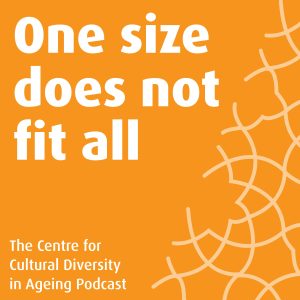IN A NUTSHELL
Editor's Note
 Insightful reflections here whereby enhancing health promotion and preventive medicine plays the role of vital pillar for reducing the burden of disease.
As the Author maintains ‘…Communities shall be sensitized by public health consultants, instead of physicians, and people shall be made aware of preventive measures for infectious diseases…
…the effectiveness of this strategy will be evident from reduced hospitalizations, a healthy and prosperous nation, and financial gains in health sectors…’
Insightful reflections here whereby enhancing health promotion and preventive medicine plays the role of vital pillar for reducing the burden of disease.
As the Author maintains ‘…Communities shall be sensitized by public health consultants, instead of physicians, and people shall be made aware of preventive measures for infectious diseases…
…the effectiveness of this strategy will be evident from reduced hospitalizations, a healthy and prosperous nation, and financial gains in health sectors…’

By Dr. Shahzad Mahmood
MBBS, M-Phill Public Health
University of the Punjab Lahore, Pakistan
Reducing the Burden of Disease
A Prospective Link between Health Promotion and Preventive Medicine
Throughout history, mankind has always dreamt, fought and strived to achieve immortality. The quest to embrace eternity has not only increased life expectancy, but also contributed to the betterment of lifestyle. However, Life on this planet has continuously been threatened and man had to face challenges including epidemics trying to perish the human genome, wars killing millions, and infectious agents producing diseases at an unprecedented rate. The precariousness of life pushed humanity to build some coping mechanisms to deal with infectious diseases and epidemics: hence giving a boost to the field of Medicine, which overshadowed disease prevention. It paid off in the form of increased burden of disease on primary, secondary and tertiary care hospitals, which have become full of patients. According to the World Health Organization, approximately 30% of the world population is suffering from chronic diseases, 13% from infectious diseases and 1 in 4 persons has some serious mental issues. The sacrifice of prevention in the favor of cure is the sole triggering factor behind this menace.
However, Covid–19 Pandemic was a blessing in disguise. From China to the USA, to the UK, Italy, Germany and the third world states, when hospitals became full of patients and the health sector of the globe flopped bitterly, some questions loomed, “Can we mitigate the possibility of another pandemic? If yes, then how? How can we reinvigorate the global health system so that the world may not see such a burden of disease again?” Thus, “Preparedness” began to be focused at. It has two most significant pillars named Preventive Medicine and Health Promotion. The former deals with preventive measures against the illness, while the latter is a key to attain good health; broadly both can be classified in Public Health.
Community health is a branch of life studies that aims at reducing disease. Advancement in medicine may cure a disease at a faster pace but how satisfying would it be if humanity, by sheer hard work in prevention, achieved a point where all infectious diseases could be eliminated altogether? It may seem ironic, but robotic operations, painless surgeries, and organ transplants were also unthinkable a century before. If research and technology can achieve the milestone of heart, kidney, liver and brain transplant, it can also eradicate infectious diseases from the map. Smallpox, for instance, has been eliminated and Polio is in the process of eradication. The eccentricity can be normalized: however, it requires determination and belief in.
“In a Social Setting, a person who cures a disease can be called a doctor, but a real doctor is one who can save millions from getting a disease”
It is an undeniable fact that healthcare is also in need of neo-innovation from health prevention to health promotion. Communities shall be sensitized by public health consultants, instead of physicians, and people shall be made aware of preventive measures for infectious diseases. After that health promotion derives shall aim at improving the quality of life and living standards. The campaign shall be coupled with new technology including artificial intelligence and GIS/GPS systems. Scabies, for an illustration, is endemic in rural areas of South Punjab, and rural Sindh, Pakistan. Target-oriented campaigns can be installed which can uproot the disease at primary level, without enhancing the burden of disease at specialist clinics in tertiary care hospitals. Pakistan’s partial lockdown strategy during COVID-19 is a glaring example. The state used GPS/GIS systems to navigate areas infected with Coronavirus; applied partial lockdown there, instead of country wide lockdown; and saved its economy, besides controlling the disease spread. Public health of today also demands neo-innovation on these lines.
The fruit will be delicious and the effectiveness of this strategy will be evident from reduced hospitalizations, a healthy and prosperous nation, and financial gains in health sectors. The shift from cure to prevention will dramatically pave a way towards a primordial fantasy of humans, the dream of immortality.

 As part of a 2020 published
As part of a 2020 published 




